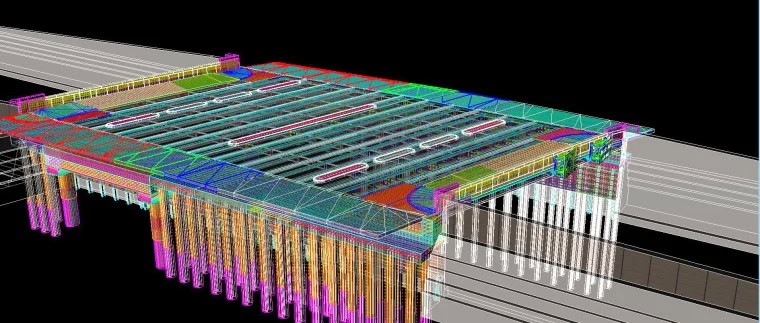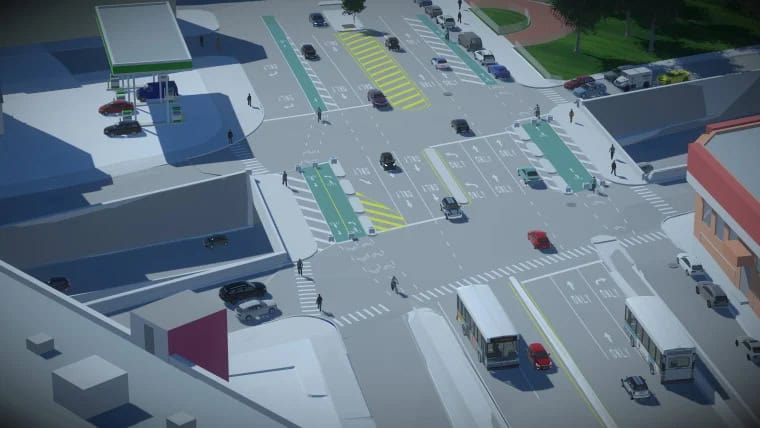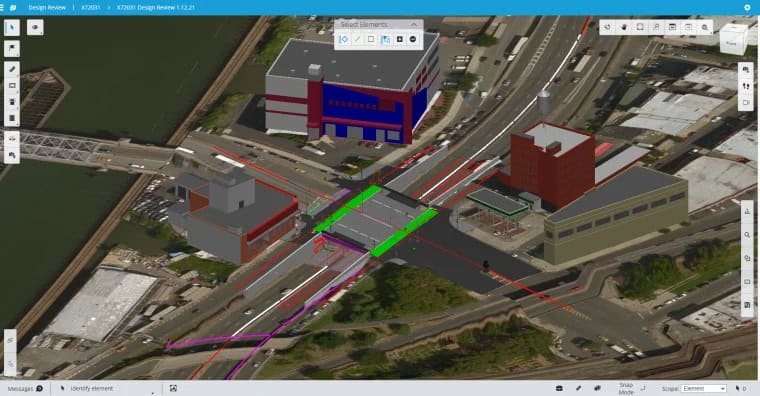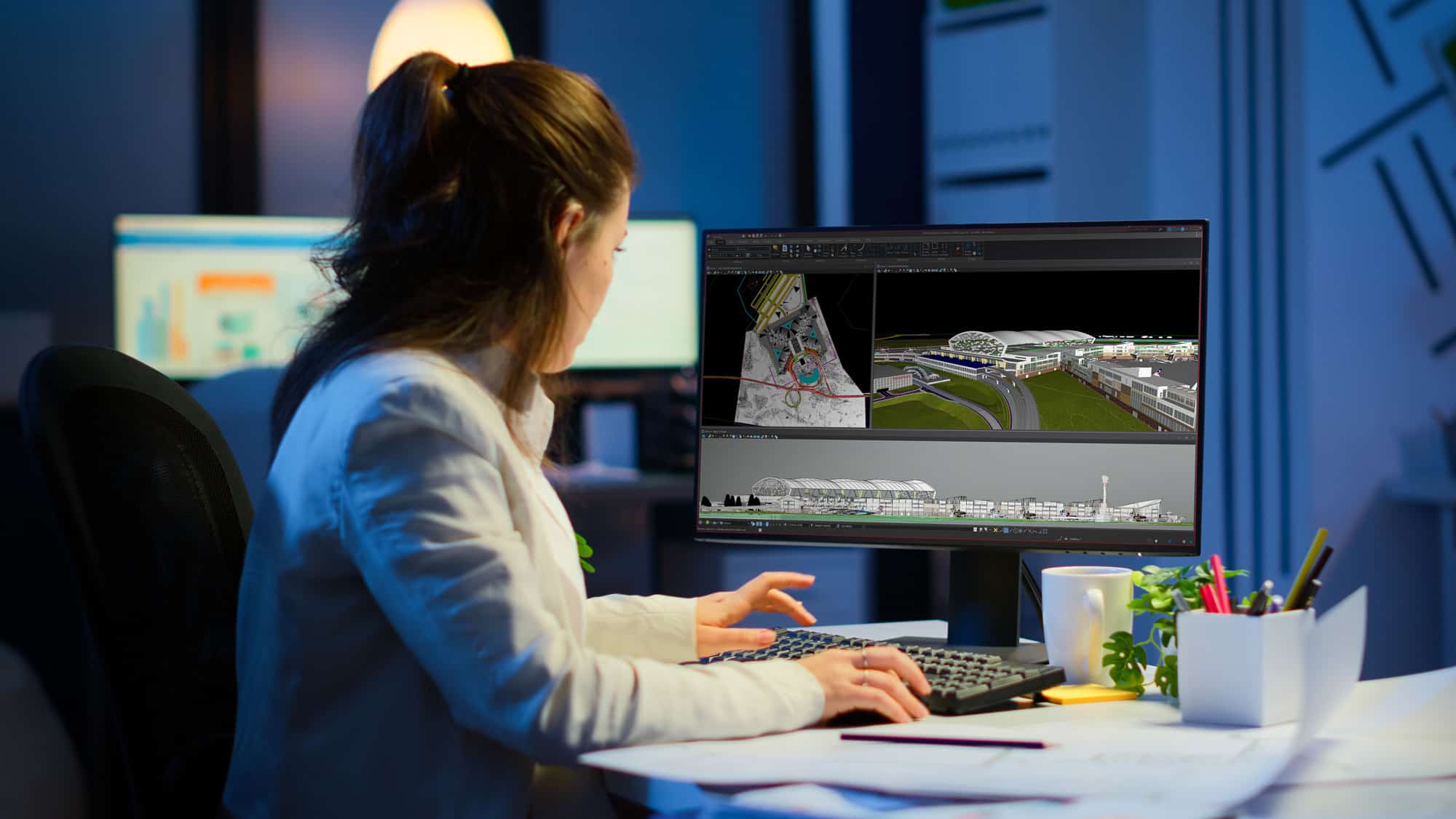New York State Department of Transportation
New York City, New York, United States
East 138th Street over the Major Deegan Expressway
Replacing an Aging Bridge Structure
Built in 1938, the existing East 138th Street Bridge, located in the heart of New York City, is being replaced to eliminate vertical clearance issues and meet heavy traffic demands. The bridge functions as a grade-separated diamond interchange with the Major Deegan Expressway below. It is wider than it is long to provide accessibility to six lanes of traffic, along with bike paths and sidewalks to accommodate the 150,000 daily passing vehicles and high pedestrian demand.
New York State Department of Transportation (NYSDOT) initiated the USD 48 million project to design and construct a new, 100-foot single-span bridge with numerous utilities, including a 15-foot-wide by 10-foot-tall, combined sewer line, that needed to be considered during design and construction.

Establishing a Digital Context
With extremely high traffic volumes, the bridge functions as a critical access point in New York City’s traffic grid, mandating that the interchange remain fully functional while facilitating the bridge replacement. This situation presented construction sequencing and coordination challenges in the congested urban area, compounded by utility obstacles and a global pandemic.
NYSDOT wanted to establish a digital context to help participants, utility owners, project stakeholders, and the public visually understand the design intent and complex staging. They wanted to use a digital twin as the primary construction document to implement the project and needed an integrated hybrid modeling approach to generate a dynamic 3D model of the complex superstructure and pedestrian components.

Finding Success with Bentley Applications
Already familiar with Bentley applications, NYSDOT selected OpenBridge Modeler, ProSteel, and MicroStation to develop a 3D model of the entire bridge structure to a level of detail that contractually enabled the team to build directly from the model, without requiring the aid of a complete set of 2D plans. Using the highly detailed, geometrically accurate model helped identify interference with the numerous utilities and coordinate with the landscape architects to aesthetically blend the new bridge with the adjacent existing historic retaining walls.
iTwin Design Review provided the central platform for more than 180 reviewers across 15 agencies to readily access and provide comments on the model in a digital environment. Using SYNCHRO and LumenRT, NYSDOT created a 4D simulation of the construction sequencing and animated renderings, serving as a valuable tool for public outreach.

Digital Twin Industrializes Delivery
With Bentley’s integrated modeling and iTwin technology, NYSDOT generated a digital twin that helped identify and resolve costly issues prior to construction. Rather than having stakeholders sift through over 200 traditional plan sheets to understand the construction sequencing, NYSDOT provided them the SYNCHRO generated 4D video that enabled them to understand the construction planning and road closures within five minutes. This situation helped alleviate public concerns, which would not have been possible with conventional methods.
The digital twin that was delivered as part of the contract will be updated to reflect any design changes, as well as the as built environment, and will be used as a tool for asset management and bridge inspection. Given the sophisticated sequencing, overwhelming number of utilities, and enormous group of project stakeholders, this project sets new standards using a digital twin as the primary contract document, industrializing delivery of the East 138th Street Bridge.
Watch the Project Summary
Facts
- Located in a congested urban area, the East 138th Street Bridge replacement presented complicated structural design and coordination challenges.
- NYSDOT used Bentley applications to create a digital twin as the primary contract document that helped identify and resolve costly issues prior to construction.
- Using iTwin Design Review provided an integrated digital environment for more than 180 reviewers across 15 agencies to optimize design review and change management.
"With the sophisticated sequencing, overwhelming amount of underground utilities, and enormous group of project stakeholders, this project sets the new standard on what can be accomplished when a digital twin is used as the primary contract document."
Zachary Maybury Design Squad Manager, Highway Design New York State Department of Transportation







